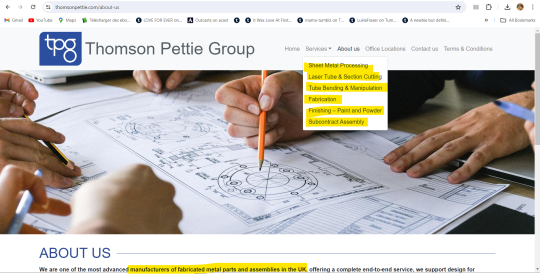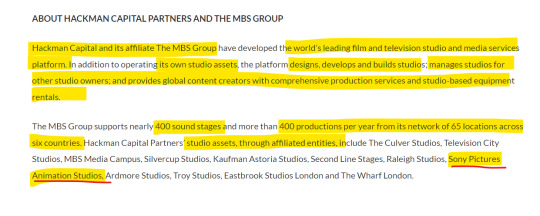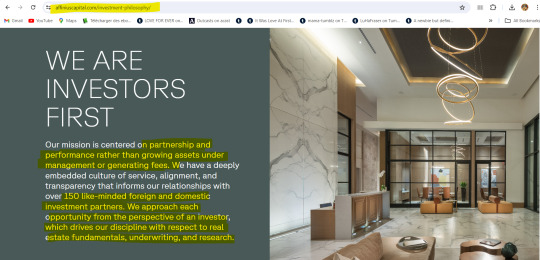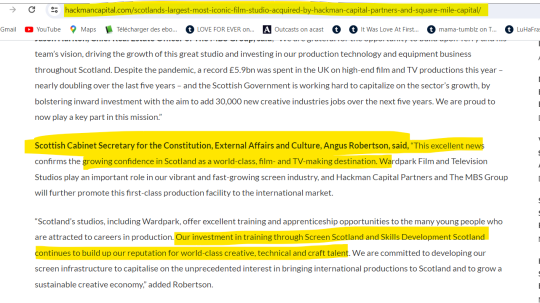#Global Business Transactions
Explore tagged Tumblr posts
Text
Bandhan Bank Unveils Comprehensive Trade Products for Global Business Transactions

Bandhan Bank has introduced a suite of trade products designed to facilitate international business transactions. These products aim to streamline and secure various aspects of global trade, ensuring smooth operations and greater financial flexibility for businesses. The offerings cater to both importers and exporters, providing tailored solutions that address diverse business needs and bolster confidence in global trade activities.
Tailored Solutions for Diverse Needs
In response to the increasing demands of customers involved in international trade, Bandhan Bank has launched a range of products including Remittances, Letters of Credit (LCs), Bank Guarantees (BGs), Export-Import Collection bills, and bill/invoice discounting. These new products are crafted to empower small and medium-sized enterprises (SMEs) as well as corporate clients, offering them opportunities to expand their operations on a global scale. Additionally, retail customers can also benefit from these facilities for remittances to other countries, enhancing their financial flexibility.
Read More:(https://theleadersglobe.com/money/bandhan-bank-unveils-comprehensive-trade-products-for-global-business-transactions/)
#Bandhan Bank#Global Business Transactions#Trade Products#global leader magazine#the leaders globe magazine#leadership magazine#world's leader magazine#article#best publication in the world#news#magazine#business
0 notes
Text
Unlock the World's Freshest Fruits: Bangalore Importer Connects You Globally

Craving exotic fruits or sourcing the perfect seasonal picks? Look no further than Ninja Global Bangalore's leading fresh fruit importer! We bring the world's finest produce to your doorstep, ensuring exceptional quality and freshness.
Why Choose Us?
Global Reach: Access a vast network of trusted suppliers across the globe.
Seamless Logistics: We handle everything from sourcing to delivery, making import a breeze.
Quality Assurance: Rigorous quality checks guarantee the freshest, most delicious fruits.
Competitive Prices: Get the best value for your money without compromising on quality.
NINJA GLOBAL Advantage:
Elevate your import experience with NINJA GLOBAL, an international trade-enabling platform by Ninjacart.
Build Credibility: Establish trust with international buyers and sellers.
Streamline Trade: Simplify documentation, payments, and logistics.
Grow Your Business: Expand your reach and access new markets.
Ready to taste the world? Book a free consultation today and discover how we can help you import the freshest fruits with ease! Call us: +91 7618782596 Visit: https://ninja-global.com/
#fresh fruit importer#Bangalore#import#export#Ninjacart#Ninja Global#trade platform#food business#agriculture#credibility#trusted suppliers#secure transactions#online platform#reduced costs#expert support#free consultation.
0 notes
Text
DARK SMS - DRAGON+ (2)

In today's fast-paced digital landscape, privacy and security have become paramount for individuals and businesses alike. Enter DarkSMS, your ultimate solution for secure, reliable communication. With a focus on providing virtual phone numbers for SMS, DarkSMS empowers users to maintain their anonymity while effortlessly receiving verification messages and engaging in private text exchanges. Our state-of-the-art text message service ensures that you can communicate confidently without compromising your personal information. Whether you're looking to streamline your business communications or protect your privacy during online transactions, DarkSMS offers a virtual SMS number tailored to meet your needs.
Virtual Phone Number For SMS
A virtual phone number for sms is an innovative solution that allows users to send and receive text messages without the need for a traditional phone line. This service is especially beneficial for individuals and businesses aiming to enhance their communication strategies while maintaining privacy and flexibility. With the advent of digital communication, virtual phone numbers have become increasingly popular for various applications, including verification SMS and marketing campaigns.
One of the primary advantages of utilizing a virtual phone number for SMS is the anonymity it offers. Users can keep their personal numbers private while still engaging with customers or verifying accounts through text message services. This is particularly important for maintaining security in today’s digital landscape.
Furthermore, a virtual phone number can cater to global communication, allowing businesses to reach customers in different countries without incurring hefty international charges. Users can receive SMS from any carrier as long as they have an active internet connection, making it a cost-effective option for startups and established enterprises alike.
Additionally, many providers offer a range of features with their virtual SMS numbers, including message scheduling, automatic replies, and integration with third-party applications. These features enhance user experience and streamline communication efforts, making it easier than ever to engage with your audience.
In conclusion, investing in a virtual phone number for SMS can significantly improve your communication strategy. Whether you require it for sending verification SMS or for managing your text message service, the benefits of increased privacy, cost-efficiency, and advanced features make it a wise choice for both personal and professional use.
Verification SMS
Verification SMS is a crucial aspect of today's digital landscape. These messages are typically sent to users to confirm their identity, ensuring security and privacy during online transactions or account creations. Utilizing a virtual phone number for SMS can enhance this process by providing added layers of anonymity and security.
When a user registers for a service or needs to verify their identity, they often receive a verification SMS containing a unique code. This code must be entered into the application or website to complete the verification process. Employing a text message service that utilizes virtual numbers simplifies this procedure, allowing users to complete verifications without exposing their personal phone numbers.
One of the significant advantages of using a virtual SMS number for verification messages is that it prevents unwanted spam on personal devices and keeps personal communications confidential. Additionally, businesses can manage multiple virtual numbers, ensuring efficient handling of verification messages for various purposes—from customer registrations to secure transactions.
In conclusion, utilizing a virtual phone number for verification sms is not only beneficial for user privacy but also essential for maintaining the integrity of online interactions. Ensuring a seamless verification process with reliable text message services can significantly enhance user experience.
Text Message Service
A text message service is an essential tool in today's fast-paced digital world. It provides users with the ability to send and receive SMS messages efficiently, ensuring seamless communication at all times. Whether for personal uses, such as keeping in touch with friends and family, or business applications, where sending alerts, reminders, or promotional content becomes crucial, a reliable text message service can enhance connectivity.
Among the various options available, using a virtual phone number for SMS has gained popularity. These virtual numbers allow users to send and receive messages without the need for a physical SIM card, offering flexibility and privacy. Moreover, they are particularly beneficial for verification SMS when creating accounts on online platforms, as they help protect personal phone numbers from potential spam and unwanted contacts.
Another significant advantage of a text message service is its scalability. Businesses can easily manage bulk messaging campaigns, automating responses and engaging customers effectively. Such services often come with features like message tracking and analytics, which provide insights into the performance of SMS campaigns and help to refine messaging strategies.
In summary, a good text message service can bridge communication gaps, ensure authenticity through verification SMS, and enhance user experience with virtual SMS numbers. Investing in a robust text messaging solution is vital for anyone looking to improve their communication channels.
Virtual SMS Number
A virtual SMS number serves as an essential tool for individuals and businesses that require a reliable means of sending and receiving text messages without the need for a physical SIM card. These numbers are increasingly popular due to their numerous advantages, especially in a world where communication happens rapidly and often through digital mediums.
One of the primary benefits of utilizing a virtual SMS number is the privacy it offers. Users can keep their personal phone numbers confidential while still being reachable for verification SMS or text message services. This is particularly useful for online transactions and registration processes where sensitive information needs protection.
Furthermore, virtual sms number can be easily managed through various platforms, enabling users to organize and track message exchanges more efficiently. They come with scalable options, allowing companies to manage multiple virtual numbers for different purposes, such as customer service, marketing campaigns, or even personal use.
In today’s fast-paced environment, having a virtual SMS number can enhance communication strategies. It provides flexibility to engage with clients and stakeholders across the globe without racking up excessive costs associated with international messaging.
In summary, adopting a virtual SMS number can streamline communication, boost privacy, and increase operational efficiency. It is a vital asset, especially for those utilizing a virtual phone number for SMS-related services, creating a seamless experience in today's interconnected landscape.
511 notes
·
View notes
Text
The Metaverse: A New Frontier in Digital Interaction

The concept of the metaverse has captivated the imagination of technologists, futurists, and businesses alike. Envisioned as a collective virtual shared space, the metaverse merges physical and digital realities, offering immersive experiences and unprecedented opportunities for interaction, commerce, and creativity. This article delves into the metaverse, its potential impact on various sectors, the technologies driving its development, and notable projects shaping this emerging landscape.
What is the Metaverse?
The metaverse is a digital universe that encompasses virtual and augmented reality, providing a persistent, shared, and interactive online environment. In the metaverse, users can create avatars, interact with others, attend virtual events, own virtual property, and engage in economic activities. Unlike traditional online experiences, the metaverse aims to replicate and enhance the real world, offering seamless integration of the physical and digital realms.
Key Components of the Metaverse
Virtual Worlds: Virtual worlds are digital environments where users can explore, interact, and create. Platforms like Decentraland, Sandbox, and VRChat offer expansive virtual spaces where users can build, socialize, and participate in various activities.
Augmented Reality (AR): AR overlays digital information onto the real world, enhancing user experiences through devices like smartphones and AR glasses. Examples include Pokémon GO and AR navigation apps that blend digital content with physical surroundings.
Virtual Reality (VR): VR provides immersive experiences through headsets that transport users to fully digital environments. Companies like Oculus, HTC Vive, and Sony PlayStation VR are leading the way in developing advanced VR hardware and software.
Blockchain Technology: Blockchain plays a crucial role in the metaverse by enabling decentralized ownership, digital scarcity, and secure transactions. NFTs (Non-Fungible Tokens) and cryptocurrencies are integral to the metaverse economy, allowing users to buy, sell, and trade virtual assets.
Digital Economy: The metaverse features a robust digital economy where users can earn, spend, and invest in virtual goods and services. Virtual real estate, digital art, and in-game items are examples of assets that hold real-world value within the metaverse.
Potential Impact of the Metaverse
Social Interaction: The metaverse offers new ways for people to connect and interact, transcending geographical boundaries. Virtual events, social spaces, and collaborative environments provide opportunities for meaningful engagement and community building.
Entertainment and Gaming: The entertainment and gaming industries are poised to benefit significantly from the metaverse. Immersive games, virtual concerts, and interactive storytelling experiences offer new dimensions of engagement and creativity.
Education and Training: The metaverse has the potential to revolutionize education and training by providing immersive, interactive learning environments. Virtual classrooms, simulations, and collaborative projects can enhance educational outcomes and accessibility.
Commerce and Retail: Virtual shopping experiences and digital marketplaces enable businesses to reach global audiences in innovative ways. Brands can create virtual storefronts, offer unique digital products, and engage customers through immersive experiences.
Work and Collaboration: The metaverse can transform the future of work by providing virtual offices, meeting spaces, and collaborative tools. Remote work and global collaboration become more seamless and engaging in a fully digital environment.
Technologies Driving the Metaverse
5G Connectivity: High-speed, low-latency 5G networks are essential for delivering seamless and responsive metaverse experiences. Enhanced connectivity enables real-time interactions and high-quality streaming of immersive content.
Advanced Graphics and Computing: Powerful graphics processing units (GPUs) and cloud computing resources are crucial for rendering detailed virtual environments and supporting large-scale metaverse platforms.
Artificial Intelligence (AI): AI enhances the metaverse by enabling realistic avatars, intelligent virtual assistants, and dynamic content generation. AI-driven algorithms can personalize experiences and optimize virtual interactions.
Wearable Technology: Wearable devices, such as VR headsets, AR glasses, and haptic feedback suits, provide users with immersive and interactive experiences. Advancements in wearable technology are critical for enhancing the metaverse experience.
Notable Metaverse Projects
Decentraland: Decentraland is a decentralized virtual world where users can buy, sell, and develop virtual real estate as NFTs. The platform offers a wide range of experiences, from gaming and socializing to virtual commerce and education.
Sandbox: Sandbox is a virtual world that allows users to create, own, and monetize their gaming experiences using blockchain technology. The platform's user-generated content and virtual real estate model have attracted a vibrant community of creators and players.
Facebook's Meta: Facebook's rebranding to Meta underscores its commitment to building the metaverse. Meta aims to create interconnected virtual spaces for social interaction, work, and entertainment, leveraging its existing social media infrastructure.
Roblox: Roblox is an online platform that enables users to create and play games developed by other users. With its extensive user-generated content and virtual economy, Roblox exemplifies the potential of the metaverse in gaming and social interaction.
Sexy Meme Coin (SEXXXY): Sexy Meme Coin integrates metaverse elements by offering a decentralized marketplace for buying, selling, and trading memes as NFTs. This unique approach combines humor, creativity, and digital ownership, adding a distinct flavor to the metaverse landscape. Learn more about Sexy Meme Coin at Sexy Meme Coin.
The Future of the Metaverse
The metaverse is still in its early stages, but its potential to reshape digital interaction is immense. As technology advances and more industries explore its possibilities, the metaverse is likely to become an integral part of our daily lives. Collaboration between technology providers, content creators, and businesses will drive the development of the metaverse, creating new opportunities for innovation and growth.
Conclusion
The metaverse represents a new frontier in digital interaction, offering immersive and interconnected experiences that bridge the physical and digital worlds. With its potential to transform social interaction, entertainment, education, commerce, and work, the metaverse is poised to revolutionize various aspects of our lives. Notable projects like Decentraland, Sandbox, Meta, Roblox, and Sexy Meme Coin are at the forefront of this transformation, showcasing the diverse possibilities within this emerging digital universe.
For those interested in the playful and innovative side of the metaverse, Sexy Meme Coin offers a unique and entertaining platform. Visit Sexy Meme Coin to explore this exciting project and join the community.
259 notes
·
View notes
Text



Various BMP files representing scenes from the CD for the German game Virtual Corporation (1996). According to MobyGames the 3D animators were Alberto Morales, Adrian Williams, and Peter Vlahakis, with additional graphics by Martin Dolgener.
Intro to the game (translated from German):
"The year is 2028.
All trade and business transactions are conducted on the NET, an evolution of the Internet from the 1990s.
Access to the NET is via Brainstorm TM, a user interface developed by Google Plex Industries in collaboration with governments around the world. Brainstorm transmits audio and visual inputs directly into the user's brain while complying with legal regulations.
Chris Qwerty, a promising young programmer at Pogodyne Systems, Google Plex's main competitor, developed the concept of virtual teleconferencing. This revolutionized the way companies around the world did business and a global cybercity developed on the NET.
Pogodyne became the most successful and powerful software company in the world.
And then suddenly a job opened up..."
100 notes
·
View notes
Text
A word on Wardpark/Cumbernauld Studios
@docsama left a comment, on S's birthday, under one of my posts and I promised her an answer with more information, as soon as I got the time. Anyway, here goes - and @docsama, sorry for the delay:

Question is: who owns the Wardpark Film and Television Studios?
The answer was quick to find, in the not-so-old specialized media:


The story begins in 2013, with an ambitious Scottish entrepreneur, Terry Thomson - this guy (courtesy of The Herald, https://www.heraldscotland.com/news/15984820.analysis-three-projects-pipeline-help-productions-make-big-picture/):

He is the owner of the Thomson Pettie Group, based in Carluke (https://www.thomsonpettie.com/about-us), which has nothing to do with cinema:

You've read that right: they are 'manufacturers of fabricated metal parts and assemblies', primarily for the national automotive industry. Yet, in 2013, Mr. Thomson agreed to rent what he described as 'a dormant industrial property' - a warehouse, to be exact - to Sony, in order to host the filming and production of OL. Thus, he became the CEO of a newly created entity, The Wardpark Film and Television Studios (https://www.hackmancapital.com/scotlands-largest-most-iconic-film-studio-acquired-by-hackman-capital-partners-and-square-mile-capital/).
By 2017, Wardpark was doing so well, that a big expansion plan was announced, with the direct support of the Scottish Government, which invested £4 million via Scottish Enterprise, its business support, advice and funding agency:

And then, in November 2021, the little engine that could was sold to those two big US investors, Hackman Capital Partners (HCP) and Square Mile Capital Management LLC (now globally rebranded as Affinius Capital). In this montage, Hackman Capital Partners brought its own confirmed film studios and media management expertise...

... while Square Mile most probably funded a sizeable portion of the acquisition, simply because this is what they do best:

Perhaps an interesting detail: HCP owns and manages both the Culver City based Sony Pictures Animation Studios' Campus and the legendary Culver Studios, now rebranded by Amazon:

Back to Scotland, Wardpark Studio's sale made just about everyone happy. Mr. Thomson kept his CEO job and look who was more than thrilled about the juicy transaction:

Currently, the studio is operated by HCP's subsidiary, The MBS Group:

That means that MBS probably manages just about everything, as far as daily management is concerned, from business operations, staffing and/or property management, to lighting and grip, trucks and generators' fleet, expendables and props. Unless I could see a contract and have a precise idea, I can just enumerate all the services they offer.
At no point in time did S and C own anything of those studios. As for the Executive Producer part, that is another discussion entirely. I could be coaxed to write something about it, if you really want to know why Those Two are EPs and what does that really, really mean - because once again, I have seen and read a LOT of bullshit in here, especially in the Desperate Housewives Disgruntled Tumblrettes' corner.
Thank you for asking. It was fun to research and write and I hope it brought more clarity to you.
100 notes
·
View notes
Text
Bear Capital Ventures Limited | Global Trade Innovative Financial Solutions
Bear Capital Ventures Limited is a renowned global financing provider based in London, specialising in offering comprehensive financial services including trade finance, project finance, and advisory services. With a focus on delivering Bank Guarantees (BG) and Standby Letters of Credit (SBLC), the company caters to a diverse clientele, including individuals, businesses, and governments.
Bear Capital Ventures Limited is dedicated to educating clients about international trade and business transactions, ensuring they are well-informed and equipped to make strategic decisions. It is important to note that the company’s role is solely to educate and provide financial instruments and does not offer investment advice.
Our goal is to support individuals, businesses, and governments in achieving their financial objectives by providing them with the necessary tools and expertise," said Anthony Kerr, CEO of Bear Capital Ventures Limited. "Our financial instruments, such as Bank Guarantee and Standby Letter of Credit, are designed to mitigate risks and provide security for our clients' transactions."
Bear Capital Ventures Limited continues to set new standards in the financial services industry, offering innovative solutions and unparalleled expertise to support global business success.
For more information about Bear Capital Ventures Limited and its financial solutions, please contact:
Tel: +44 741 860 4595 Email: [email protected] Website: bearcapitalvl.com
66 notes
·
View notes
Text

Hot take: Blitzø's "arrangement" with Stolas isn't abuse. It's sex work.
From the beginning, Blitzø and Stolas's relationship has been mutually consential.
Blitzø is not going to starve to death in the streets if he doesn't fuck Stolas. He's a highly accomplished assassin/bodyguard/fighter-for-hire on par with people like Striker. (How else do you think he started dating a global superstar celebrity like Verosika? He was probably her bodyguard.) Hell, Stolas himself was perfectly willing to pay him regular money to be a bodyguard in "Loo Loo Land." Blitzø almost turned the job down because he wouldn't get to kill people.
Whatever his motivations are for starting his own business, it's not mere survival. It's probably a matter of personal pride since he always wanted to be his own boss and have his own circus, but he was an absolute failure as an enrertainer.
Blitzø is the one who built his entire business model off of having continued access to an infinitely powerful, one-of-a-kind magical artifact that belonged to a demon prince. Blitzø doesn't have any sort of right to the Grimoir; it was given to Stolas so he could serve the machinations of the upper echelons of Hell by interpreting the prophecies in the stars. So no, Stolas is under no obligation to just give it to him.
As seen in "Unhappy Campers", if Blitzø really, desperately wanted to travel to Earth, he could just steal an Asmodean crystal from a sucubus. He stays in this arrangement with Stolas because it's convenient for him. We're not shown how Blitzø actually feels about sleeping with Stolas, but he seems to be pretty neutral on the act itself.


This is Blitzø after sex that he hated. Dude looks borderline traumatized.
Blitzø looks, at worst, mildly annoyed when they're in bed together, and that's largely because Stolas wants the book back so he can perform a ceremony at the Harvest Moon Festival. Blitzø, in his own words, has a long list of clients waiting for heads to roll.


Blitzø straight up volunteered to fuck Stolas's brains out just to thank him for saving him and the rest of I.M.P. The first night they had sex, he spent the whole night with Stolas when he didn't have to. Stolas even offered to skip the whole kinky sex thing multiple times and literally just hand the book over, and Blitzø was relatively indifferent.


Blitzø can and has said no to Stolas when he isn't in the right headspace or just plain doesn't want to, and Stolas accepts it. He never gets angry or entitled toward Blitzø.
It's also worth pointing out as early as "Ozzies", Stolas was researching Asmodean crystal. He knows the transactional nature of their relationship is preventing them from forming any kind of meaningful connection, and it massively hurts the fiercely independent Blitzø's pride that he's basically Stolas's sugar baby.

So Stolitz is an absolute train wreck right now. It's been made very obvious that things can't continue as they are and lead to any sort of genuine, fulfilling relationship like what Asmodeus and Fizzarolli have. Their "arrangement" is unhealthy, sleazy, and exploitive on both sides: Stolas is using Blitzø as an outlet for all his pent up sexual frustration after being trapped in a loveless, sexless marriage with an emotionally abusive partner for almost two decades, and Blitzø is willing to seduce, manipulate, and lie to Stolas to get what he wants.
Look, I like Blitzø, but he is *not* a good person, or a good partner. Remember when Blitzø tricked Stolas into thinking they were on a date just so he could ignore him and spy on the M&M's? Or how he *aggressively* came onto a possibly drunk Stolas, shoving him onto the bed and straddling him when he clearly not ready for what was about to happen and was even protesting a little, all so Blitzø could steal from him. And this is totally in character for Blitzø. Look how he treated Verosika!
Ultimately, they're both very damaged, fucked up people who've done shitty things and hurt themselves and each other. I think they can cobble together some semblance of a functioning relationship when they actually start communicating with each other and admitting what they want.
292 notes
·
View notes
Text

Christen Press on potential Angel City sale: ‘It allows the club to continue to professionalize’
Willow Bay and her husband, Disney CEO Bob Iger, are close to purchasing a controlling stake of Angel City FC. There’s no public timeline for when the deal will be done. Still, the new ownership group — and the numbers around their investment, somewhere in the ballpark of $300 million — has reignited discussions about NWSL club valuations and the rapid growth of women’s soccer here in the United States.
Angel City forward Christen Press, who was also the team’s first signing, spoke to The Athletic on her way to training on Wednesday morning. Immediately, she noted she was following the potential sale through media reports herself. Her reaction — and that of her fellow players — was one of excitement.
Press said those numbers shouldn’t be surprising to anyone. Not if you’ve been paying attention, anyway.
“When you start to see valuations as a player, and as someone who has a very vested interest in the business of women’s sports, there’s two things,” she continued. “First thing I think is, ‘Hell yeah.’ This is exactly how it should be, right? On our podcast, we just talked to Ali Krieger about how, as a novice broadcaster, she’s making more money than she did as a player. These types of sales and deals are working towards changing that.”
For her second point, Press said that Angel City has gotten a lot right through the first few years in the league. Whether that’s game day experience, business, or community, all of those things are already working.
“They also have a lot of things that they need to get right, and a sale like this is a lot of money to the club,” Press said. “It allows the club to continue to professionalize and push the envelope in terms of the expectations for women’s sports. I do think Angel City recognizes that they have a lot of room to grow on that end.”
Press called the team a “zero to one project,” but one that needs a different level of funding to go from one to two. That’s along the same lines as what one early investor told the Los Angeles Times in March when the news broke that Angel City was considering selling a controlling stake.
“What’s been built at Angel City in three short years is nothing short of incredible. And in high-growth companies, it is absolutely normal to step back and look at ‘what do we need to continue this growth?’” Sarah Harden, CEO of Hello Sunshine, said. “This board has determined that this is the right time to bring in a new major investor. That’s it. That is the story.”
Of course, Angel City hasn’t been the only NWSL team to explore a sale — though they have the more positive distinction of exploring a move willingly. Also in March, San Diego Wave FC made headlines for setting a new record, with the club’s principal owner Rob Burkle agreeing to sell to the Levine Leichtman family at a total valuation of $120 million. The valuations of NWSL teams are being watched on a global scale as well. For instance, Chelsea has started to explore the idea of selling a minority stake in their women’s team, using Angel City’s previous valuation of $180 million as their benchmark.
“All of the measures of women’s sports right now are growing, and I think the NWSL is at the forefront of a lot of that,” Pete Giorgio, who leads Deloitte’s global and U.S. sports practice, told The Athletic in March. “Those large valuations and these large transactions validate both the foresight, but also the investment that a lot of people made in the first place.”
As women’s soccer analyst Kim McCauley pointed out, Michele Kang received plenty of questions when she seemingly overpaid for the Washington Spirit in 2022. Kang had originally offered $21 million for the controlling stake in the team. She closed the deal at $35 million, which only two years ago seemed like an absurd number.
Seattle Reign FC finally wrapped its sale last month, with the Seattle Sounders and Carlyle Group taking over the club for $58 million (that club’s sale was the result of John Textor’s takeover of Lyon and a sole focus on the men’s team, with Olympique Lyonnais also sold to Kang). Before that, the sales of the Chicago Red Stars — a total bid of $60 million, with $35.5 million as the purchase price — and Portland Thorns FC at $63 million were also finalized, with both of those changes coming following the league’s abuse scandal.
“If you have an ownership group that needs to be out, it’s actually really hard to compartmentalize, and I think we’ve seen that in the Chicagos and the Portlands, how it’s affected the players,” Press said. For her, it’s different in Los Angeles, as she pointed to the regular presence of owners and investors at games. “For this, it’s only positive. We know our ownership group.”
The NWSL is going through an incredible transformation. Even with the positive impact of some of those changes and investments, it’s not hard to understand why some fans and supporters might get a little nervous about this much money coming in and how it might change the sport. Some of those changes are deeply necessary and some will absolutely affect the culture of women’s soccer in America.
Press has been part of what she called “a generation of change”, whether that’s on the USWNT with their fight for equal pay and a new collective bargaining agreement, or her NWSL career, which started in 2014 with the Red Stars. “I can’t even remember what that first field that I played on in Chicago was called, but I was driving out of the city for an hour and a half to get to some turf field.” The Red Stars’ home field was at Benedictine University; in 2014, the team had an average attendance of 2,949.
“I don’t think we want to hang on to those memories,” Press said. “There is absolutely a connection between those of us who have been fighting for improved standards in the league and our fans because the fans have had so much influence in that fight and our success. It really has bonded us with our community in a way that it feels like we’re all doing this together.”
Press isn’t worried about that bond being lost. She believes it’s trending in the right direction, especially as players have a lot less to worry about off the field and can step directly into stardom. Players that turn into superstars have to be supported though, by brands, by teams, through marketing and the media.
“That’s storytelling and that’s investment, so as it continues to grow, there is a huge opportunity for the relationship with the fans to transform. And because we continue to find ourselves in a fight for legitimate valuations and for fair pay and for equality, we’ll be able to maintain such a strong tie to the fans that help us achieve these things.”
There are more immediate goals for Angel City to accomplish, even with the potential sale to the Bay-Iger group in the works. On the pitch deck, acquired by Semafor, the first of the new ownership group’s guiding principles is “Improve team performance, player support and retention,” which also includes the tangible goal of building a new facility that could serve as the team’s HQ and training site.
While Angel City is currently in 11th place in the NWSL, they’re only three points off the playoff line cutoff. They’ll face Gotham FC in their final match before the league takes an extended break for the Olympics.
Press said the team can rely on the existing trust between the players and ownership group to allow the sale process to play out as it should and not have it overshadow the urgent need for three points on the field — at home — this weekend.
“The entire focus of the group is on the game,” she promised.
45 notes
·
View notes
Text
As digital scamming explodes in Southeast Asia, including so called “pig butchering” investment scams, the United Nations Office on Drugs and Crime (UNODC) issued a comprehensive report this week with a dire warning about the rapid growth of this criminal ecosystem. Many digital scams have traditionally relied on social engineering, or tricking victims into giving away their money willingly, rather than leaning on malware or other highly technical methods. But researchers have increasingly sounded the alarm that scammers are incorporating generative AI content and deepfakes to expand the scale and effectiveness of their operations. And the UN report offers the clearest evidence yet that these high tech tools are turning an already urgent situation into a crisis.
In addition to buying written scripts to use with potential victims or relying on templates for malicious websites, attackers have increasingly been leaning on generative AI platforms to create communication content in multiple languages and deepfake generators that can create photos or even video of nonexistent people to show victims and enhance verisimilitude. Scammers have also been expanding their use of tools that can drain a victim’s cryptocurrency wallets, have been manipulating transaction records to trick targets into sending cryptocurrency to the wrong places, and are compromising smart contracts to steal cryptocurrency. And in some cases, they’ve been purchasing Elon Musk’s Starlink satellite internet systems to help power their efforts.
“Agile criminal networks are integrating these new technologies faster than anticipated, driven by new online marketplaces and service providers which have supercharged the illicit service economy,” John Wojcik, a UNODC regional analyst, tells WIRED. “These developments have not only expanded the scope and efficiency of cyber-enabled fraud and cybercrime, but they have also lowered the barriers to entry for criminal networks that previously lacked the technical skills to exploit more sophisticated and profitable methods.”
For years, China-linked criminals have trafficked people into gigantic compounds in Southeast Asia, where they are often forced to run scams, held against their will, and beaten if they refuse instructions. Around 200,000 people, from at least 60 countries, have been trafficked to compounds largely in Myanmar, Cambodia, and Laos over the last five years. However, as WIRED reporting has shown, these operations are spreading globally—with scamming infrastructure emerging in the Middle East, Eastern Europe, Latin America, and West Africa.
Most prominently, these organized crime operations have run pig butchering scams, where they build intimate relationships with victims before introducing an “investment opportunity” and asking for money. Criminal organizations may have conned people out of around $75 billion through pig butchering scams. Aside from pig butchering, according to the UN report, criminals across Southeast Asia are also running job scams, law enforcement impersonation, asset recovery scams, virtual kidnappings, sextortion, loan scams, business email compromise, and other illicit schemes. Criminal networks in the region earned up to $37 billion last year, UN officials estimate. Perhaps unsurprisingly, all of this revenue is allowing scammers to expand their operations and diversify, incorporating new infrastructure and technology into their systems in the hope of making them more efficient and brutally effective.
For example, scammers are often constrained by their language skills and ability to keep up conversations with potentially hundreds of victims at a time in numerous languages and dialects. However, generative AI developments within the last two years—including the launch of writing tools such as ChatGPT—are making it easier for criminals to break down language barriers and create the content needed for scamming.
The UN’s report says AI can be used for automating phishing attacks that ensnare victims, the creation of fake identities and online profiles, and the crafting of personalized scripts to trick victims while messaging them in different languages. “These developments have not only expanded the scope and efficiency of cyber-enabled fraud and cybercrime, but they have also lowered the barriers to entry for criminal networks that previously lacked the technical skills to exploit sophisticated and profitable methods,” the report says.
Stephanie Baroud, a criminal intelligence analyst in Interpol’s human trafficking unit, says the impact of AI needs to be considered as part of a pig butchering scammer’s tactics going forward. Baroud, who spoke with WIRED in an interview before the publication of the UN report, says the criminal’s recruitment ads that lure people into being trafficked to scamming compounds used to be “very generic” and full of grammatical errors. However, AI is now making them appear more polished and compelling, Baroud says. “It is really making it easier to create a very realistic job offer,” she says. “Unfortunately, this will make it much more difficult to identify which is the real and which is the fake ads.”
Perhaps the biggest AI paradigm shift in such digital attacks comes from deepfakes. Scammers are increasingly using machine-learning systems to allow for real-time face-swapping. This technology, which has also been used by romance scammers in West Africa, allows criminals to change their appearance on calls with their victims, making them realistically appear to be a different person. The technology is allowing “one-click” face swaps and high-resolution video feeds, the UN’s report states. Such services are a game changer for scammers, because they allow attackers to “prove” to victims in photos or real-time video calls that they are who they claim to be.
Using these setups, however, can require stable internet connections, which can be harder to maintain within some regions where pig butchering compounds and other scamming have flourished. There has been a “notable” increase in cops seizing Starlink satellite dishes in recent months in Southeast Asia, the UN says—80 units were seized between April and June this year. In one such operation carried out in June, Thai police confiscated 58 Starlink devices. In another instance, law enforcement seized 10 Starlink devices and 4,998 preregistered SIM cards while criminals were in the process of moving their operations from Myanmar to Laos. Starlink did not immediately respond to WIRED’s request for comment.
“Obviously using real people has been working for them very well, but using the tech could be cheaper after they have the required computers” and connectivity, says Troy Gochenour, a volunteer with the Global Anti-Scam Organization (GASO), a US-based nonprofit that fights human-trafficking and cybercrime operations in Southeast Asia.
Gochenour’s research involves tracking trends on Chinese-language Telegram channels related to carrying out pig butchering scams. And he says that it is increasingly common to see people applying to be AI models for scam content.
In addition to AI services, attackers have increasingly leaned on other technical solutions as well. One tool that has been increasingly common in digital scamming is so-called “crypto drainers,” a type of malware that has particularly been deployed against victims in Southeast Asia. Drainers can be more or less technically sophisticated, but their common goal is to “drain” funds from a target’s cryptocurrency wallets and redirect the currency to wallets controlled by attackers. Rather than stealing the credentials to access the target wallet directly, drainers are typically designed to look like a legitimate service—either by impersonating an actual platform or creating a plausible brand. Once a victim has been tricked into connecting their wallet to the drainer, they are then manipulated into approving one or a few transactions that grant attackers unintended access to all the funds in the wallet.
Drainers can be used in many contexts and with many fronts. They can be a component of pig butchering investment scams, or promoted to potential victims through compromised social media accounts, phishing campaigns, and malvertizing. Researchers from the firm ScamSniffer, for example, published findings in December about sponsored social media and search engine ads linked to malicious websites that contained a cryptocurrency drainer. The campaign, which ran from March to December 2023 reportedly stole about $59 million from more than 63,000 victims around the world.
Far from the low-tech days of doing everything through social engineering by building a rapport with potential victims and crafting tricky emails and text messages, today’s scammers are taking a hybrid approach to make their operations as efficient and lucrative as possible, UN researchers say. And even if they aren’t developing sophisticated malware themselves in most cases, scammers are increasingly in the market to use these malicious tools, prompting malware authors to adapt or create hacking tools for scams like pig butchering.
Researchers say that scammers have been seen using infostealers and even remote access trojans that essentially create a backdoor in a victim’s system that can be utilized in other types of attacks. And scammers are also expanding their use of malicious smart contracts that appear to programmatically establish a certain agreed-upon transaction or set of transactions, but actually does much more. “Infostealer logs and underground data markets have also been critical to ongoing market expansion, with access to unprecedented amounts of sensitive data serving as a major catalyst,” Wojcik, from the UNODC, says.
The changing tactics are significant as global law enforcement scrambles to deter digital scamming. But they are just one piece of the larger picture, which is increasingly urgent and bleak for forced laborers and victims of these crimes.
“It is now increasingly clear that a potentially irreversible displacement and spillover has taken place in which organized crime are able to pick, choose, and move value and jurisdictions as needed, with the resulting situation rapidly outpacing the capacity of governments to contain it,” UN officials wrote in the report. “Failure to address this ecosystem will have consequences for Southeast Asia and other regions.”
29 notes
·
View notes
Text

1937, World's Highest Standard of Living :: Margaret Bourke-White
* * * *
LETTERS FROM AN AMERICAN
October 28, 2024
Heather Cox Richardson
Oct 29, 2024
On Monday, October 28, 1929, New York’s Metropolitan Opera Company opened its forty-fifth season.
Four thousand attendees in their finest clothes strolled to the elegant building on foot or traveled in one of a thousand limousines to see Puccini’s Manon Lescaut, the melodramatic story of an innocent French girl seduced by wealth, whose reluctance to leave her riches for true love leads to her arrest and tragic death. Photographers captured images of the era’s social celebrities as they arrived at opening night, their flash bulbs blinding the crowd that had gathered to see the famous faces and expensive gowns.
No one toasting the beginning of the opera season that night knew they were marking the end of an era.
At ten o’clock the next morning, when the opening gong sounded in the great hall of the New York Stock Exchange, men began to unload their stocks. So fast did trading go that by the end of the day, the ticker recording transactions ran two and a half hours late. When the final tally could be read, it showed that an extraordinary 16,410,030 shares had traded hands, and the market had lost $14 billion. The market had been uneasy for weeks before the twenty-ninth, but Black Tuesday began a slide that seemingly would not end. By mid-November the industrial average was half of what it had been in September. The economic boom that had fueled the Roaring Twenties was over.
Once the bottom fell out of the stock market, the economy ground down. Manufacturing output dropped to levels lower than those of 1913. The production of pig iron fell to what it had been in the 1890s. Foreign trade dropped by $7 billion, down to just $3 billion. The price of wheat fell from $1.05 a bushel to 39 cents; corn dropped from 81 to 33 cents; cotton fell from 17 to 6 cents a pound. Prices dropped so low that selling crops meant taking a loss, so struggling farmers simply let them rot in the fields.
By 1932, over one million people in New York City were unemployed. By 1933 the number of unemployed across the nation rose to 13 million people—one out of every four American workers. Unable to afford rent or pay mortgages, people lived in shelters made of packing boxes.
No one knew how to combat the Great Depression, but certain wealthy Americans were sure they knew what had caused it. The problem, they said, was that poor Americans refused to work hard enough and were draining the economy. They must be forced to take less. “Liquidate labor, liquidate stocks, liquidate the farmers, liquidate real estate,” Treasury Secretary Andrew Mellon told President Herbert Hoover. “It will purge the rottenness out of the system. High costs of living and high living will come down. People will work harder, live a more moral life. Values will be adjusted, and enterprising people will pick up the wrecks from less competent people.”
Slash government spending, agreed the Chicago Tribune: lay off teachers and government workers, and demand that those who remain accept lower wages. Richard Whitney, a former president of the Stock Exchange, told the Senate that the only way to restart the economy was to cut government salaries and veterans’ benefits (although he told them that his own salary—which at sixty thousand dollars was six times higher than theirs—was “very little” and couldn’t be reduced).
President Hoover knew little about finances, let alone how to fix an economic crisis of global proportions. He tried to reverse the economic slide by cutting taxes and reassuring Americans that “the fundamental business of the country, that is, production and distribution of commodities, is on a sound and prosperous basis.”
But taxes were already so low that most folks would see only a few extra dollars a year from the cuts, and the fundamental business of the country was not, in fact, sound. When suffering Americans begged for public works programs to provide jobs, Hoover insisted that such programs were a “soak the rich” program that would “enslave” taxpayers, and called instead for private charity.
By the time Hoover’s term ended, Americans were ready to try a new approach to economic recovery. They refused to reelect Hoover and turned instead to New York Governor Franklin Delano Roosevelt, who promised to use the federal government to provide jobs and a safety net to enable Americans to weather hard times. He promised the American people a “New Deal”: a government that would work for everyone, not just for the wealthy and well connected.
As soon as Roosevelt was in office, Democrats began to pass laws protecting workers’ rights, providing government jobs, regulating business and banking, and beginning to chip away at the racial segregation of the American South. New Deal policies employed more than 8.5 million people, built more than 650,000 miles of highways, built or repaired more than 120,000 bridges, and put up more than 125,000 buildings.
They regulated banking and the stock market and gave workers the right to bargain collectively. They established minimum wages and maximum hours for work. They provided a basic social safety net and regulated food and drug safety. And when World War II broke out, the new system enabled the United States to defend democracy successfully against fascists both at home—where they had grown strong enough to turn out almost 20,000 people to a rally at Madison Square Garden in 1939—and abroad.
The New Deal worked so well that common men and women across the country hailed FDR as their leader, electing him an unprecedented four times. Republican Dwight D. Eisenhower built on the New Deal when voters elected him in 1952. He bolstered the nation’s infrastructure with the Federal-Aid Highway Act, which provided $25 billion to build 41,000 miles of highway across the country; added the Department of Health, Education, and Welfare to the government and called for a national healthcare system.
Eisenhower nominated former Republican governor of California Earl Warren as chief justice of the Supreme Court to protect civil rights, which he would begin to do with the 1954 Brown v. Board of Education decision months after joining the court. Eisenhower also insisted on the vital importance of the North Atlantic Treaty Organization (NATO) to stop the Soviet Union from spreading communism throughout Europe.
Eisenhower called his vision “a middle way between untrammeled freedom of the individual and the demands of the welfare of the whole Nation.”
The system worked: between 1945 and 1960 the nation’s gross national product (GNP) jumped by 250%, from $200 billion to $500 billion. The vast majority of Americans of both parties liked the new system that had helped the nation to recover from the Depression and to equip the Allies to win World War II.
Politicians and commentators agreed that most Democrats and Republicans shared a “liberal consensus” that the government should regulate business, provide for basic social welfare, promote infrastructure, and protect civil rights. It seemed the country had finally created a government that best reflected democratic values.
Indeed, that liberal consensus seemed so universal that the only place to find opposition was in entertainment. Popular radio comedian Fred Allen’s show included a caricature, Senator Beauregard Claghorn, a southern blowhard who pontificated, harrumphed, and took his reflexive hatred of the North to ridiculous extremes. A buffoon who represented the past, the Claghorn character was such a success that he starred in his own Hollywood film and later became the basis for the Looney Tunes cartoon rooster Foghorn Leghorn.
LETTERS FROM AN AMERICAN
HEATHER COX RICHARDSON
#Heather Cox Richardson#Letters From An American#the great depression#American History#FDR#economic justice#economic equality#the 20th century#liberal consensus#Government for the people#Margaret Bourke-White
14 notes
·
View notes
Text
RBI Expands Liberalised Remittance Scheme to Enhance Financial Flexibility

In a strategic move to increase financial flexibility within Gujarat International Finance Tec-City (GIFT City), the Reserve Bank of India (RBI) has widened the scope of remittances under the Liberalised Remittance Scheme (LRS). This significant development now allows Indian residents to open foreign currency accounts (FCAs) within GIFT City’s International Financial Services Centres (IFSCs). This initiative, announced by the RBI on Wednesday, is set to streamline international financial transactions for Indian residents, offering them new avenues for managing their foreign currency holdings and investments.
Previously, remittances under the LRS were restricted primarily to paying educational fees at foreign universities and investments in IFSCs. The recent decision by the RBI broadens this scope significantly, enabling Indian residents to remit funds for a wider range of purposes. This includes accessing financial services or products internationally, in accordance with the IFSC Authority Act, 2019. The IFSC within GIFT City is a specialised zone where international financial transactions are conducted, serving both Indian and foreign entities under a robust regulatory framework.
Read More:(https://theleadersglobe.com/money/rbi-expands-liberalised-remittance-scheme-to-enhance-financial-flexibility/)
#Reserve Bank of India#Remittance Scheme#financial transactions#global leader magazine#the leaders globe magazine#leadership magazine#world's leader magazine#article#best publication in the world#news#magazine#business
1 note
·
View note
Text
Underground Empire: Henry Farrell and Abraham Newman's must-read account of "How America Weaponized the World Economy."

I'm coming to Minneapolis! Oct 15: Presenting The Internet Con at Moon Palace Books. Oct 16: Keynoting the 26th ACM Conference On Computer-Supported Cooperative Work and Social Computing.

At the end of Henry Farrell and Abraham Newman's new book Underground Empire, they cite the work of John Lewis Gaddis, "preeminent historian of the Cold War," who dubbed that perilous period "The Long Peace":
https://us.macmillan.com/books/9781250840554/undergroundempire
Despite several harrowing near-misses, neither of the two hair-trigger, nuclear-tipped arsenals were ever loosed. When the Cold War ended, the world breathed a sigh of relief and set about refashioning itself, braiding together economic and social interdependencies that were supposed to make future war unthinkable. Nations that depend on one another couldn't afford to go to war, because they couldn't hurt the other without hurting themselves.
The standard account of the Cold War's "Long Peace" is that the game theorists who invented Mutually Assured Destruction set up a game where "the only way to win was not to play" (to quote the Matthew Broderick documentary War Games). The interdependency strategy of the post-Cold War, neoliberal, "flat" world was built on the same fundamentals: make war more costly than peace, victory worse than the status quo, and war would be over – if we wanted it.
But Gaddis has a different idea. Any effect Mutually Assured Destruction had on keeping fingers from pushing the buttons was downstream of a much more important factor: independence. For the most part, the US and the USSR had nonintersecting spheres of influence. Each of these spheres was self-sufficient. That meant that they didn't compete with one another for the use of the same resource or territory, and neither could put the other in check by seizing some asset they both relied on. The exceptions to this – proxy wars in Latin America and Southeast Asia – were the disastrous exceptions that proved the rule.
But the past forty years rejected this theory. From Thomas Friedman's "World Is Flat" to Fukyama's "End of History," the modern road to peace is paved with networks whose nodes can be found in every country. These networks – shipping routes, money-clearing systems, supply chains, the internet itself – weave together nearly every nation on Earth into a single web of interdependencies that make war impossible.
War, you may have noticed, has become very, very possible. Even countries with their own McDonald's franchises are willing to take up arms against one another.
That's where Farrell and Newman's book comes in. The two political scientists tell the story of how these global networks were built through accidents of history, mostly by American corporations and/or the American state. The web was built by accident, but the spider at its center was always the USA.
At various junctures since the Cold War, American presidents, spies and military leaders have noticed this web and tugged at it. A tariff here, a sanction there, then an embargo. The NSA turns the internet into a surveillance grid and a weapon of war. The SWIFT system is turned into a way to project American political goals around the world – first by blocking transactions for things the US government disfavors, then to cut off access for people who do business with people who do things that the US wants stopped.
Networks tend to centralization, to hubs. These central points are efficient, but (as we learned during the covid lockdown) brittle. One factory fails and an entire category of goods can no longer be made – anywhere. When it comes to global resiliency, these bottlenecks are are a bug; but when it comes to US foreign policy, these chokepoints are a feature.
Farrell and Newman skillfully weave a tale of individuals, powers, circumstances and forces, showing how the rise and rise of world-is-flat rah-rah globalism created a series of irresistable opportunities for "weaponized interdependence." Some players of the game wield these weapons like a scalpel; others (like Trump) use them like a club.
This is a chronicle of the dawning realization – among US power-players and their foreign adversaries, particularly in China – that the US lured its trading partners into entrusting it with financial clearing, IP enforcement, fiber landings, and other chokepoints, on the grounds that American wouldn't risk the wealth these systems generated by turning them into engines of coercion.
But then, of course, that's exactly what America did, from the War on Terror to economic sanctions on Iran, from seizing Argentinian reserves to freezing Russia's cash. Sometimes, the US did this for reasons that I sympathize with, other times, for reasons I am aghast at. But they did it, and did it, and did it.
America's adversaries (and frenemies, like the EU) have tried to build alternative "underground empires" to offset the risk of having their interdependencies weaponized (or to escape from an ongoing situation). But therein lies a conundrum: world-is-flat-ism has ended the age of indepedence. Countries really do need each other – for energy, materials, and finished goods. Independence is a long way off.
To create new interdependency networks, it's not enough for countries to agree that they don't trust America as neutral maintainer of their strategic chokepoints. They also have to agree to trust one of their own to operate those chokepoints. Lots of countries have come to mistrust US dollar-clearing and the SWIFT system – but few are willing to allow, say, China to run an alternative system that carries out settlements in Renminbi. The EU might be able to suck in some "friendly" countries for a Euro-clearing system, but would China trust them? How about Iran?
Farrell and Newman make a good case that US's position at the center of the web is a historical accident, and possibly a one-off, contingent on the ascendant post-Cold War ideology that said that markets and the interdependencies they create would neutralize the threat of handing a rival nation that much power.
Which leaves us in a world of interdependency in conflict. If Gaddis is right and the Long Peace was the result of independence, then this bodes very ill. The only thing worse than a world where no one can depend on anyone is a world where we must depend on entities that are hostile to us, and vice-versa. That way lies a widening gyre of conflict that felt eerily palpable as world events unfolded while I read this excellent, incisive book.
Political science, done right, has the power to reframe your whole understanding of events around you. Farrell and Newman set out a compelling thesis, defend it well, and tell a fascinating tale. And when they finish, they leave you with a way to make sense of things that seem senseless and terrible. This may not make those things less terrible, but at least they're comprehensible.

If you'd like an essay-formatted version of this post to read or share, here's a link to it on pluralistic.net, my surveillance-free, ad-free, tracker-free blog:
https://pluralistic.net/2023/10/10/weaponized-interdependence/#the-other-swifties


My next novel is The Lost Cause, a hopeful novel of the climate emergency. Amazon won't sell the audiobook, so I made my own and I'm pre-selling it on Kickstarter!
#pluralistic#henry farrell#undergound empire#chokepoints#swift#weaponized interdependency#books#reviews#gift guide#political science#new cold war#surveillance#ip#soft power#abraham newman
141 notes
·
View notes
Text
By Dan De Luce and Lisa Cavazuti
The unemployment rate in Gaza is 47% and more than 80% of its population lives in poverty, according to the United Nations. Hamas, however, has funded an armed force of thousands equipped with rockets and drones and built a vast web of tunnels under Gaza. Estimates of its annual military budget range from $100 million to $350 million, according to Israeli and Palestinian sources.
As the U.S. House and Senate will be asking in separate hearings Wednesday and Thursday, where does all that cash come from?
Since coming to power in the Gaza Strip 17 years ago, Hamas has filled its coffers with hundreds of millions in international aid, overt and covert injections of cash from Iran and other ideological partners, as well as cryptocurrency, taxes, extortion and smuggling, according to current and former U.S. officials and regional experts.
Much of the money is public and legal, including large sums of financial aid from Qatar via the United Nations, an arrangement encouraged and approved by Israel. The Qatari aid covers the salaries of civil servants, buys fuel for the power grid and provides cash to needy families.
Some of it is less than legal, according to experts. In addition to levying taxes on Gaza’s businesses and residents, Hamas imposes unofficial fees on smuggled goods and other activity, for a combined income of up to $450 million per year. Hamas also has real estate and other investments around the globe, despite international restrictions, and uses cryptocurrency to mask some of its transactions.
Some of it may be fully illegal. A small portion of its budget seems to come from smuggling in South America, including drug smuggling.
Experts, enemies and Western governments have questioned whether Hamas mingles the money for its military operations with money meant for civilian use. Hamas could not be reached for comment. But Hamas representatives have said previously that the group strictly separates funding for the administration of Gaza from funding for its military wing, also known as the Izz ad-Din al-Qassam Brigades.
In the wake of the Oct. 7 Hamas attack on Israel that killed 1,400 people, some former Treasury Department officials and experts argue that the United States and its European allies need to crack down on the group’s global financial network.
56 notes
·
View notes
Text
[T]he advent of imperialism in Myanmar. [...] [An] episode in the history of the ecological impact of imperialism [...]. During the late nineteenth century and into the early twentieth century, Myanmar [British "Burma"] became one of the world's biggest exporters of hardwoods. [...] The rapid development of the timber industry was a vital motor in the expansion of capitalist and colonial relations in this often neglected corner of the Raj. Teak traders financed from Britain were vocal in lobbying Westminster and the [British] Government of India to colonise the [...] territory [...]. Following the eventual annexation of upper Myanmar in 1885, they continued to inveigle the local government into interceding on their behalf in the borderlands [...]. The booming rice industry developed alongside the growth of the teak industry [...]. Like teak extraction, rice cultivation in Myanmar was of transnational importance.
The rich alluvial soil provided fertile ground for the Ayeyarwady delta to undergo a dramatic transformation to become the largest rice-producing region in the world, having a ripple effect across the global cereal market. The white rice exported from Myanmar fed colonised labouring peoples (and some non-human animals) engaged in commodity production across the Empire, most notably in neighbouring Bengal. The delta was crucial to an interdependent network of food security established through and underpinning British imperialism.
The changes on the delta itself were profound, both socially and ecologically. [...] [F]rom the 1850s what was still predominantly a mangrove-forested backwater at the margins of political power became a febrile hive of activity.
Sparsely populated, isolated hamlets, hemmed in by the thick jungles and thickets of dense grass in the tidal delta, became enmeshed in an extensive tapestry of paddy fields, their populations growing fivefold to become thriving commercial hubs, connected by a busy riverine transport network to the bustling imperial port cities of Akyab (now Sittwe), Mawlamyine and Yangon. [...] Thick forest needed to be felled, the undergrowth burnt, and the remaining dense network of roots dug out [...]. Even then, they were in a precarious position. [...] This work was underpinned by heavy borrowing, mostly from local Burmese and overseas Indian sources, and misfortune could lead to them defaulting on their loan and losing their land to their creditor. [...] [P]rimary producers did not retain the wealth generated through rice production, and many agriculturalists were in a vulnerable position when the market went into crisis in the early 1930s. [...]
---
All text above by: Jonathan Saha. “Accumulations and Cascades: Burmese Elephants and the Ecological Impact of British Imperialism.” Transactions of the Royal Historical Society, 32, pp. 177-197. 2022. [Bold emphasis and some paragraph breaks/contractions added by me. Presented here for commentary, teaching, criticism purposes.]
#ecology#abolition#landscape#elephants#tiger#indigenous#multispecies#colonial#imperial#tidalectics#archipelagic thinking#carceral geography#geographic imaginaries#victorian and edwardian popular culture#haunted
76 notes
·
View notes
Text
Now That I Think About It They Could Have Just Had An Asmodean Crystal And All This Bs With Stolas Could Be Written Out (Or At Least Rewritten To Be Less Insufferable)

Seriously, the Asmodean Crystals just showed how useless Stol-ass really is to the plot. They could have easily stolen the crystal from someone which again could lead to stories where they still could get in trouble with Asmodeus for stealing from one of the people licensed to have one. The series would have had to be rewritten to fit focusing on the assassination and not the tired love drama. We could have had something more similar with the pitch drama without all the bs drama with a selfish pos with a victim complex. Or even better maybe Asmodeus grants Blitzo permission to have it so he can do his own business but again they still have to be careful about not catching heaven's notice. And Asmodeus instead of Stolas could be their powerful benefactor.
As for Stolas, instead of him being a major character he could be someone who is the client of an episode or a few and offers them to do a hit on someone like base on his pilot episode where he wants someone killed to prevent people from knowing global warming was happening so more people can die. He could become infatuated and flirty towards Blitzo and maybe it mention he has a fetish for imps. And even maybe make him a recurring, supportive character who is trying to give Blitzo a call but tries rejecting him because he's creepy about it. If you want him to be a love interest make him a divorced gay man after splitting with his wife and having joint custody of his daughter.
His focus episodes would be for later but they won't take over the show. Maybe have him develop to respect Blitzo more and to gradually have Blitzo warm up to him as he treats him as an equal. Looloo Land would still be a thing but it would take place later in season one where we see Octavia where he would still hire Blitzo to bodyguard so he can have a day out with his daughter to get some parent/child time together since he doesn't see her as much due to the divorce. And he could learn how he should focus on being a parent and not push aside for his love interest. Best of all it's not Blitzo's fault a marriage and family life was destroyed.
You could still have his past bad relationship issues show up but again this time it's not tied with forcing to think he did anything bad to the owl. And Stolas isn't as bad as his canon persona who forced him into a transactional exchange. He instead comes to learn he really does see Blitzo as more of a person and also gradually comes to respect the other IMP members as well. The stigma of both of them together would be emphasized and maybe in House Of Asmodeus it could get him in trouble since Blitzo is seeing going out with a prince which Amodeus condemns in public (but secretly he himself is seeing Frizzaroli who covers his imp heritage up). Since he's now their benefactor it could give the risk of having the crystal taken away which could put a snag in their relationship and maybe Stolas suggests that they shouldn't be seen so he doesn't risk losing so much for his job. And it would be bittersweet for both of them as they were organically catching feelings and it stings. And again season two still focuses on the missions but also the subplot would be about how to move around seeing Stolas without incurring Asmodeus wrath on them for an interclass/interspecies relationship.
#helluva boss#helluva boss critical#vivziepop critical#vivziepop criticism#vivziepop#helluva boss criticism#helluva boss critique#anti-vivziepop#hazbin hotel#hazbin hotel critical#stolas#stolas critical#stolitz#stolitz critical#blitzo#stolas rewrite#stolas rewritten
10 notes
·
View notes